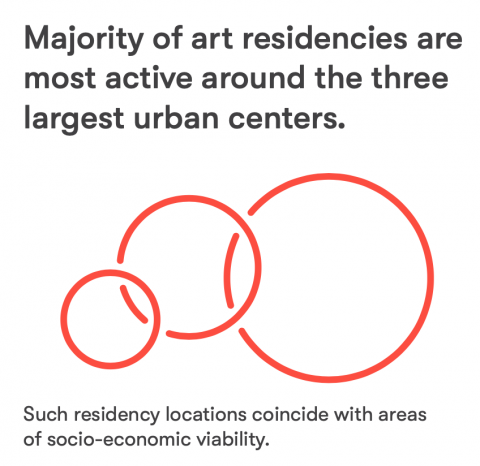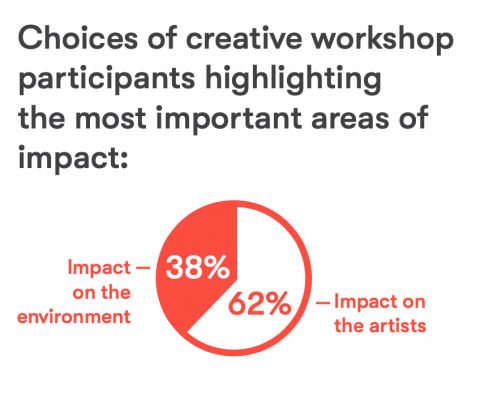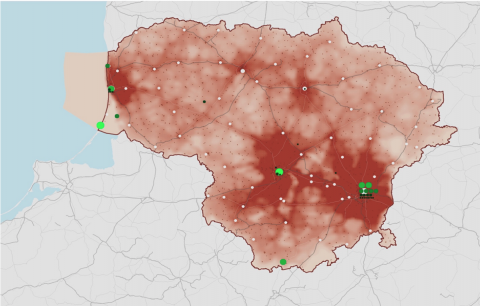The impact of art residencies
| Numbers | |
| 40 | art residencies |
| 2 | workshops |
| 7 | months |
The mobility and networking of artists is an integral part of a successful career.


Successful careers are built through so-called 'soft' and 'hard' infrastructures. Soft infrastructure is one that helps an artist to acquire the necessary competencies, raise their qualification, the quality of their production. 'Hard' infrastructure is all the physical spaces that provide opportunities for the development of artists, allowing them to exhibit, publicize their works of art, work, and so on. Soft and hard infrastructures are often combined in art residencies - they provide opportunities for artists to improve their professional qualifications, network, expand the range of their work and thinking, while creating space and time for creativity.
Art residencies differ in their nature, purposes, fields of art, target audience and other aspects, but one of the most common denominators is that they facilitate the mobility of artists and allow them to engage in creative activity in an alternative space other than their own. They can also be virtual.
By interpreting the various data through which art residencies affect artists and the environment, also involving various stakeholders, our team has identified values that need to be integrated into the further development and monitoring of art residencies.
The impact on the artist is most pronounced through:
/ dedicated time and space to create;
/ networking;
/ a combined local and global perspective;
/ dissemination and awareness raising.
The most significant environmental impacts are:
/ positive impact on the local community;
/ contribution to local development.
The study showed that a pivotal axis in updating the existing potential of art residencies and their impact is the integral evaluation of residencies and decoupling from the “result” measure, as different art residencies have different effects, and the impact is clearly influenced by residency’s profiles, priorities and maturity.

Quantitative performance criteria need to be complemented by qualitative measures: evaluation of selection transparency (clear procedure for selecting residents), partnerships established, community surveys of local impact of residencies, surveys of residents 'needs and expectations, long-term monitoring of residents' careers.
Based on the study, we have developed a proposal to change the funding of residencies, as both small initiatives and established strong art residencies, fall into the same category of assessment with different levels, needs and objectives.
Funding should be divided into two strands: The first is the funding of new art residence initiatives (1). This funding should focus on new initiatives and fund activities such as the development of a residence program, the hiring / finding of a curator, internships, training, the development of an art residence concept, the implementation of pilot art residencies, and so on. The second program (2) should fund ongoing activities for established art residencies. In this case, the quality of activities and the thoughtful process should be prioritized over novelty.
It is also interesting that the residency opportunities of Lithuanian artists could be developed more strongly in Lithuania, as the Scholarship Program of the Lithuanian Council for Culture is not visible as an opportunity to finance residency activities of individual artists.
Full report with summary and infographic can be found here - https://www.kulturostyrimai.lt/uncategorized/meno-rezidenciju-poveikio-vertinimas.
Photo credit Ahmad Odeh.